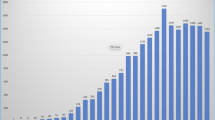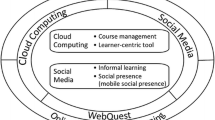Abstract
Rapid advances in technology, particularly with the Internet, have led to the availability of numerous tools to support teaching and learning. This study involved the use of an Internet application, Connecting Communities of Learners (CCL), in courses for prospective teachers. Unlike earlier studies involving the use of the CCL, the context of this study related to full-time graduate students who used the CCL to augment weekly face-to-face instruction. An interpretive study was undertaken to ascertain student and teacher perceptions of the learning environments associated with the use of the CCL. Through the use of the CCL, students were able to be autonomous in regard to their own learning, co-participate with their peers and the instructor, and establish and maintain a community of learners in which participants could interact with others as co-teachers and co-learners. The CCL was perceived as a useful tool for building learning environments in which all participants can contribute written texts as evidence of what is known and as objects from which others can learn.
Similar content being viewed by others
REFERENCES
Admiraal, W.F., Lockhorst, D., Wubbels, T., Korthagen, F.A.J. & Veen, W. (1998). Computer-mediated communication environments in teacher education: computer conferencing and the supervision of student teachers. Learning Environments Research, 1, 59–74.
Fraser, B.J. (1998). Classroom environment instruments: development, validity and applications. Learning Environments Research, 1, 1–5.
Gee, J.P. (1990). Social linguistics and literacies: ideology in discourses. New York: Falmer Press.
Glasersfeld, E. von. (1995). Radical constructivism: a way of knowing and learning. Washington, DC: Falmer Press.
Guba, E. & Lincoln, Y.S. (1989). Fourth generation evaluation. Beverly Hills, CA: Sage.
Lemke, J.L. (1995). Textual politics: discourse and social dynamics. London: Taylor & Francis.
Lorsbach, A.W. & Basolo, F. Jr. (1998). Collaborating in the evolution of a middle school science learning environment. Learning Environments Research, 1, 115–127.
Roth, W.-M. (1998). Teacher-as-researcher reform: student achievement and perceptions of learning environment. Learning Environments Research, 1, 75–93.
Rowe, M.B. (1974). Wait time and rewards as instructional variables, their influence in language, logic, and fate control: part one – wait time. Journal of Research in Science Teaching, 11, 81–94.
Rowe, M.B. (1983). Getting chemistry off the killer course list. Journal of Chemical Education, 60, 954–956.
Schön, D. (1985). The design studio. London: RIBA Publications.
Taylor, P.C., Fraser, B.J. & Fisher, D.L. (1997). Monitoring constructivist classroom learning environments. International Journal of Educational Research, 27, 293–302.
Templeton, R.A. & Johnson, C.E. (1998). Making the school environment safe: Red Rose's formula. Learning Environments Research, 1, 7–33.
Tobin, K. (1987). The role of wait time in higher cognitive level learning. Review of Educational Research, 57, 69–95.
Tobin, K. (Ed.). (1993). The practice of constructivism in science education. Hillsdale, NJ: Lawrence Erlbaum.
Tobin, K. (1998). Qualitative perceptions of learning environments on the World Wide Web. Learning Environment Research, 1, 139–162.
Tobin, K. (1999). The Internet as a tool for the reform of science teacher education: transformative agent or catalyst for cultural reproduction? [C. Ormes, Trans.] Enseñanza de las Ciencias, 17, 155–164.
Tobin, K. (in press). Learning to teach science using the Internet to connect communities of learners. In P. Taylor, P. Gilmer & K. Tobin (Eds.), Transforming undergraduate science teaching: social constructivist perspectives. Dordrecht, The Netherlands: Kluwer.
Waxman, H.C. & Huang, S.-Y.L. (1998). Classroom learning environments in urban elementary, middle and high schools. Learning Environments Research, 1, 95–113.
Author information
Authors and Affiliations
Rights and permissions
About this article
Cite this article
Chiew Goh, S., Tobin, K. Student and Teacher Perspectives in Computer-Mediated Learning Environments in Teacher Education. Learning Environments Research 2, 169–190 (1999). https://doi.org/10.1023/A:1009921907828
Issue Date:
DOI: https://doi.org/10.1023/A:1009921907828




